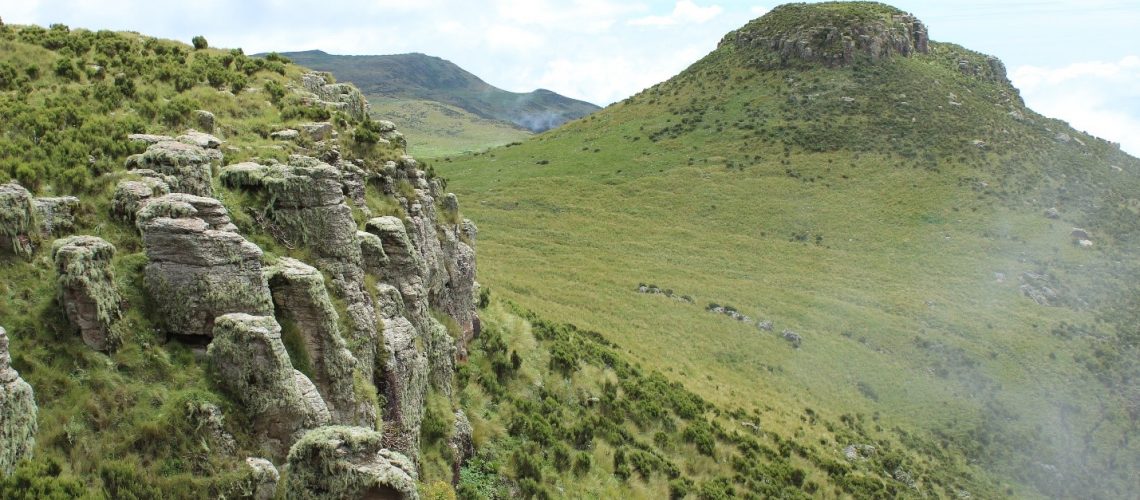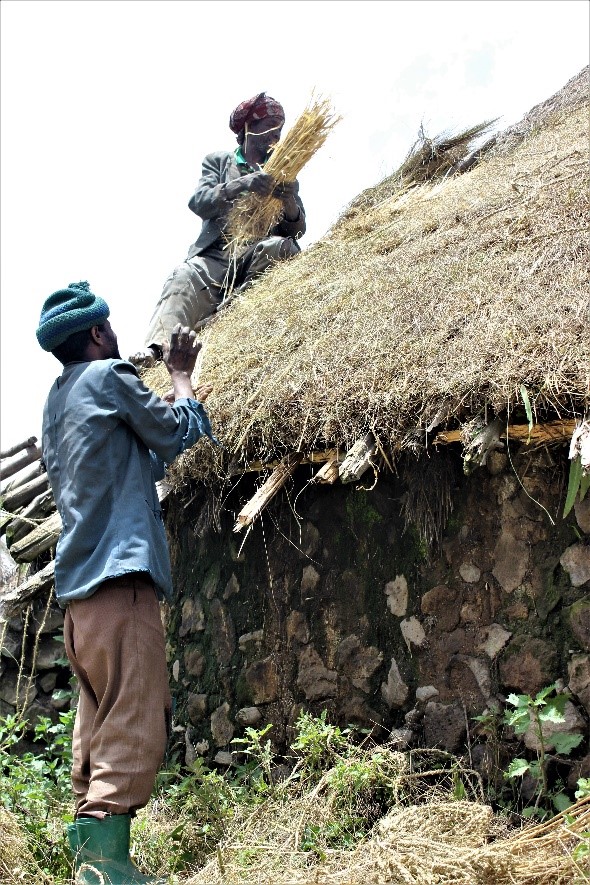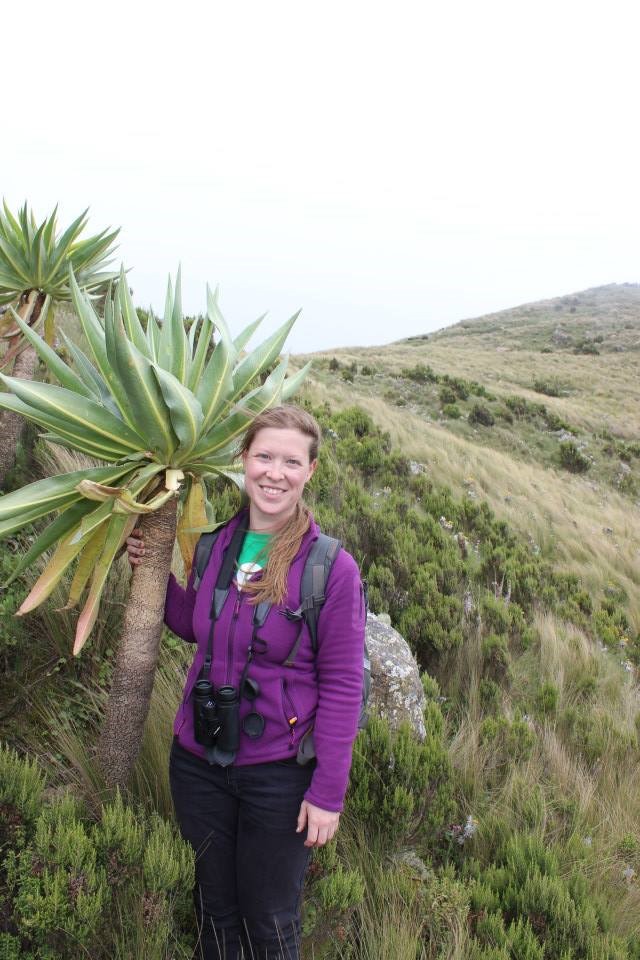
Where the grass is sometimes greener: conserving remnants of the afroalpine zone in Ethiopia
By Cara Steger, Sustainability Leadership Fellow and Ph.D. Candidate in the Department of Ecosystem Science and Sustainability and the Graduate Degree Program in Ecology

When most people think of mountains, they imagine massive, snow-covered peaks rising into the ether. The Ethiopian highlands do not look like that, despite elevations ranging well above 4,000 meters above sea level. These mountains, which cover approximately 49% of Ethiopia’s land area, are characterized by high plateaus that have supported human societies for millennia. The regular seasons, length of daylight, and temperatures facilitated the evolution of species that are highly adapted to these environmental conditions – something known as the Afroalpine zone. This unique ecological zone is found in scattered islands across the African continent. In Ethiopia, the Afroalpine is increasingly threatened by humans in need of more farmland.
Walking through Afroalpine vegetation is an exercise in tranquility. At least it is in Guassa Community Conservation area, where I do my research. Thyme grows in every available nook, and its scent surrounds you with every step. The wind is loud and cold, whipping your cheeks lightly and making the guassa grasses dance. These grasses (Festuca spp.) are the backbone of this region. They are highly prized by the local community for their use as roof thatch, rope, and house construction material. “The guassa is our clothes, food, shelter… our entire livelihood”, is a phrase repeated by community members. In addition to this economic value, the cultural identity of local people is tied closely to the health of the guassa grasses – “protection of Guassa is a cultural heritage, passed down from old to new generations…the area is a treasure we will give to our grandchildren”, one man explained.
 The Guassa area has been managed communally by local people for over 400 years as a source of guassa grasses, firewood, and grazing land. It was the first officially sanctioned community conservation area in Ethiopia, beginning in 2012. My research thus far has focused on understanding how the community values this conservation area, and how they make decisions about management in light of the scientific research being conducted there.
The Guassa area has been managed communally by local people for over 400 years as a source of guassa grasses, firewood, and grazing land. It was the first officially sanctioned community conservation area in Ethiopia, beginning in 2012. My research thus far has focused on understanding how the community values this conservation area, and how they make decisions about management in light of the scientific research being conducted there.
Historically, the area was managed to ensure continuous, high-quality guassa grass production, and healthy wildlife populations were something of an unintentional by-product. But all of that is changing rapidly – grazing and firewood collection are no longer allowed in the area due to recent ecological research indicating human disturbances may be impacting local rodent populations. These rodents support one of the few remaining populations of the highly endangered Ethiopian wolf, which is of enormous importance to national and international conservation organizations. To compensate for the loss of grazing and firewood access, the area management is increasingly turning to tourism as a source of additional income – and tourists also want to see more wolves.
With conservation interests focusing increasingly on the wildlife component, the guassa grasses are no longer the primary focus of most management actions. In fact, a shrub has been invading the grasslands for about 20 years now, and the local community has been hesitant to do anything about it without an ecological assessment. Together with colleagues at Addis Ababa University, we are establishing a field experiment to study the impacts of shrub removal on species composition and the health of the guassa grasses in particular. This research has the unanimous support of the local community and demonstrates the value of establishing strong relationships to ensure scientific research has immediate conservation impact. With luck and persistence, I am hopeful that we can contribute to Afroalpine conservation that advances the needs of both people and landscapes.